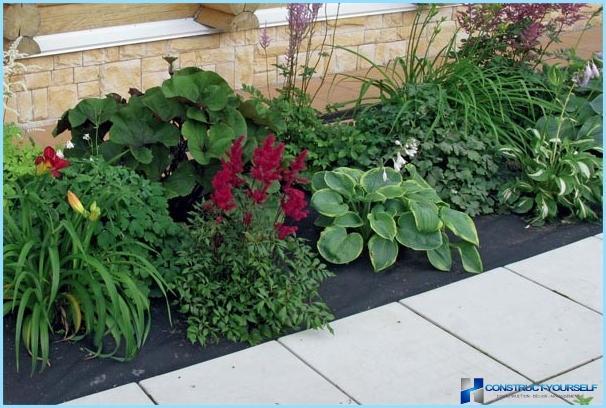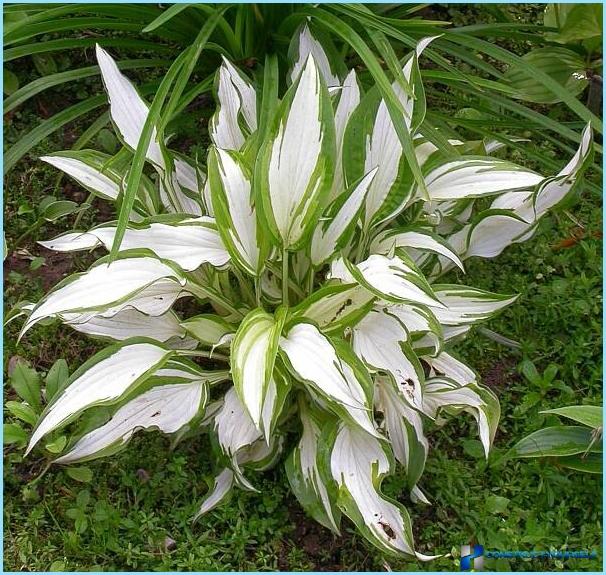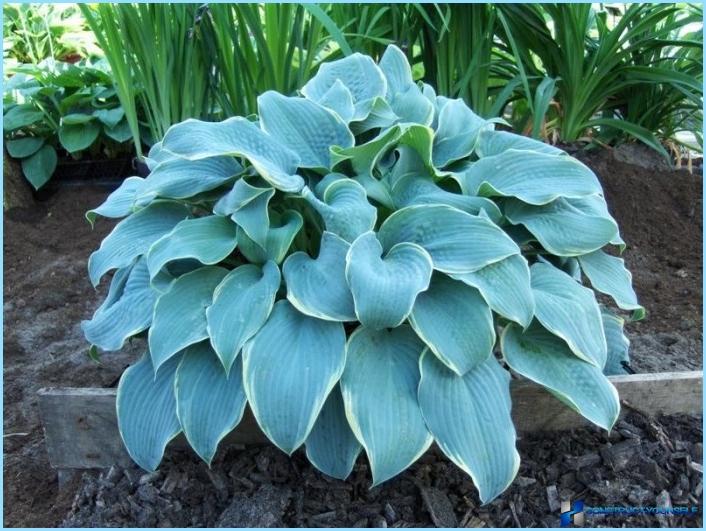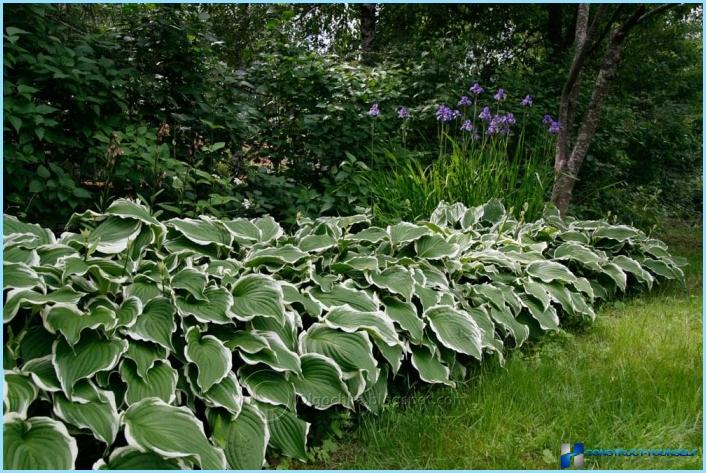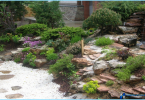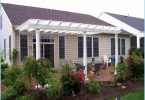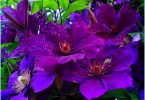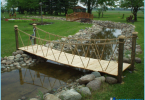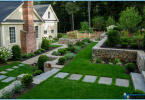Landscape design plants and flowers is one of the main places. Very often only the flowers are the decoration of the site. Designers use a lot of different plants, one of the most popular is host. It is used as novice landscape designers, making with it a basic background, and professionals, experimenting with varieties of this plant and other flowers.
Host – a decorative foliage plant that blooms for several years. It is unpretentious and can grow in any conditions, becoming a decoration like flower beds and Alpine slides. The advantage of this flower is its basal foliage, it resembles a cushion of air and has many colors and shapes. It flowers located at the ends of long stems and bloom all season. Many gardeners cut the stalks and enjoying the colorful foliage.
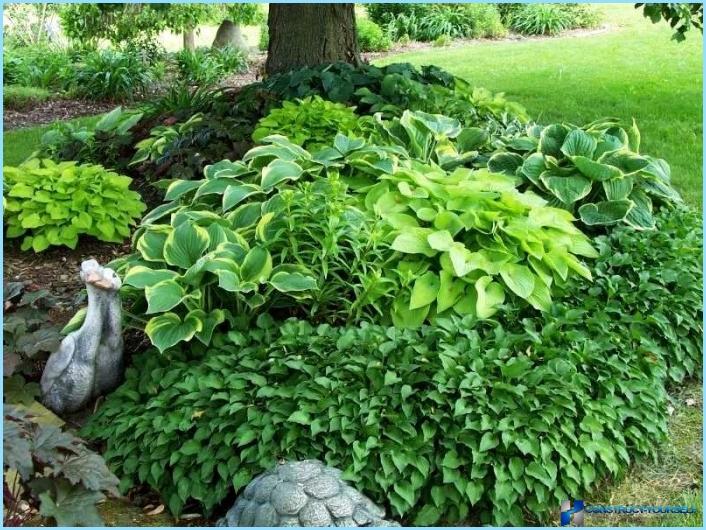
In autumn the colours are lush Bush hosts continues to please its owners and their guests, changing the saturation of colors and flowers until the first frosts. Therefore, hosts in the landscape design are considered essential. Planted somewhere in the garden, a small area of the host, you can purchase a wonderful place for rest and reflection.
Some design secrets for using the host in the garden you can see in the video:
Favorite designers ↑
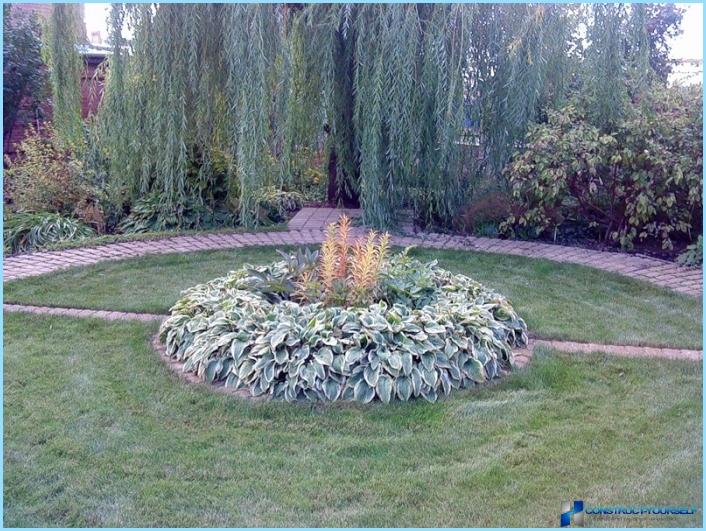
Host a darling of landscape designers. The positive qualities that led her to choose for the decoration of area:
- A huge variety of species of plants suitable for any intended landscape design. Differ not only in color, but the variety of shapes of leaves and flowers.
- This flower is a perennial, some species of centenarians safely retain their beauty and decorativeness to 25 years.
- Host is hardy and adapts quickly to the place where it is planted. It will grow well as in the sun and in the shade. More the host loves polozhennye places.
- Simple to plant and easy to care for them, they do not require additional time or cost. To me it is necessary not more often than once in five years, as by this time the plantation will grow strongly.
- Like any other flowers, loves the water, but the Mature plant, can do without it for quite some time, if the weather is dry or the hosts missing some time.
- Due to the large leaf covering most of the land, weeds do not disturb the place where it grows. This eliminates the need for weeding.
- A host not susceptible to infection with different fungi, but in wet weather it willingly hunt snails and weevils. Adult bushes is not much harm, but young shoots may die.
- This flower is hardy, will not scare him freeze. In the winter they will be quite warming due to fallen leaves. You need to protect only the young immature plants.
- Combined with any other flowers and plants, without clashing. This is what designers love making it link with all elements of landscape design.
- Will fit well in any place, whether it’s framing a pathway or porch, pond or element of the Alpine slide. Host can be a separate area in the yard or grow in a container and decorate the terrace or gazebo.
The leaves of this plant creates a nice contrast that allows you to create colorful compositions with other flowering plants.
Plant neighbors ↑
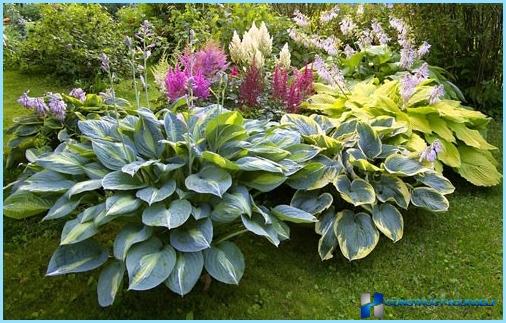
The host does not always combine with other plants because it has about 40 types, different in shape, texture and color. Planting several different types of host, you can create a colorful composition. These beds create a decoration for statues and monuments, fence and terrace.
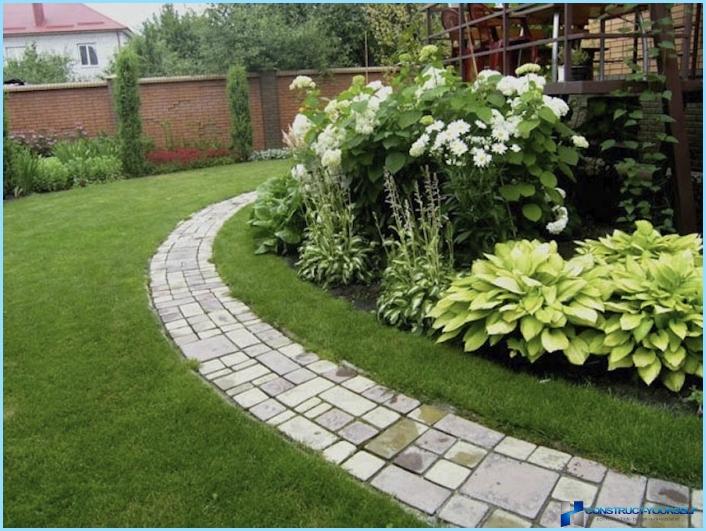
With hostas in the neighborhood get along almost any other. For example, conifers, spreading accentuate the shape and color of the hosts. To focus on the differences of the shapes and textures of the leaves will help the bleeding heart, moroznika or geranium. With the hydrangea make friends varieties of Hosta, with a bright and silvery leaves. Well spreading shrub fit, in such a fashion now, a Japanese garden, complementing sedge, ferns and rhododendrons.
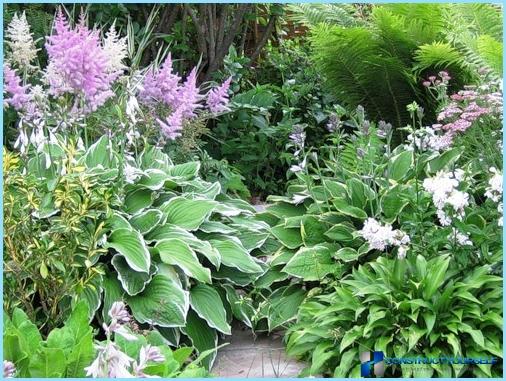
When decorating use low rockery varieties with blue or dark-green leaves grow they resemble stones spread out on the carpet. Creating «natural» flower garden, Hosta will fit well into the company barbarisov and daisies, Sedum and Phlox. Looks fantastic the combination of hosts with astilbe, whose colors, colorful buds fluffy beneficial shade the leaves are rich Bush.
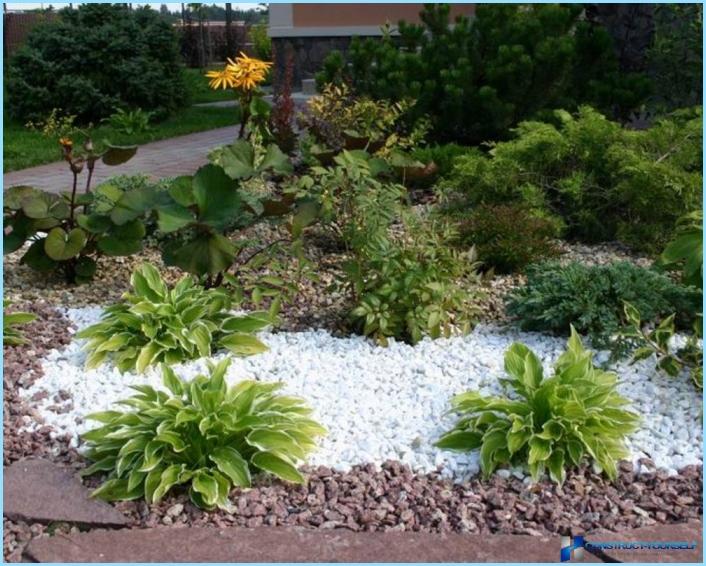
When creating vertical compositions, choose tall flowers such as Phlox, lilies, or Solomon’s seal. Beautiful hosts cover the bare stems of the tall roses. Make a striking contrast will help the plants with leaves of a different color, for example, plant or Horny goat weed. It looks spectacular combination of large leaves the host with narrow leaves of tradescantia virgin and toffee.
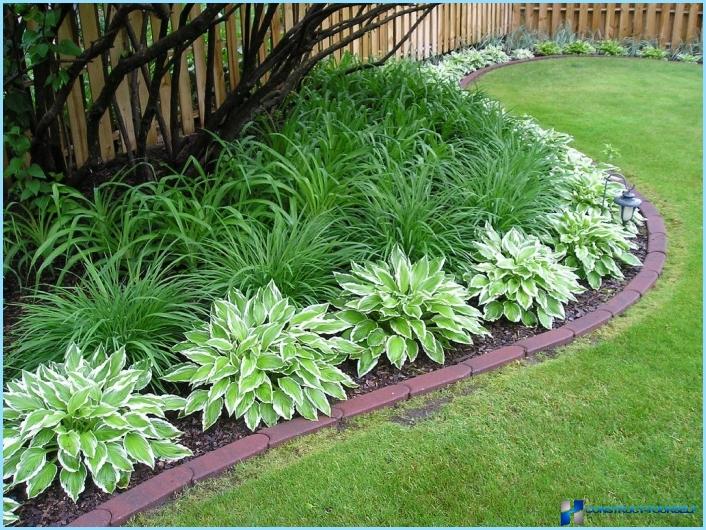
Plants with small leaves reveal the beauty of most hosts, such as, meadow Lysimachia, Boudreau or periwinkle. Also flowers with carved leaves: peonies, gladioli and ferns. Often forming the composition, the designers put next to the tall grasses, for example, miscanthus, molinia or reed grasses. For color and texture separation next plant wormwood or lavender. Miniature types of hosts get along well with lung and soft cuff.
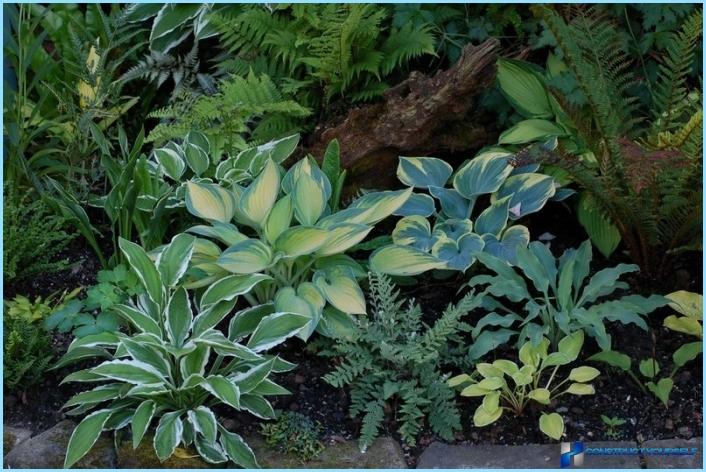
The types of hosts ↑
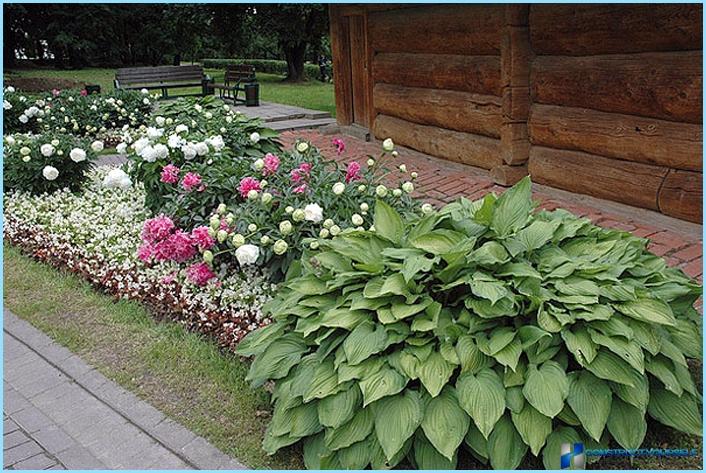
Types of this spreading Bush are so diverse and numerous that all of them know that only narrow specialists. It klassificeret height:
- Above 20 centimeters is povorotnyi, which are well suited for rocky exposures of the design such as rockeries and Alpine slides.
- Not exceeding 30 cm – these plants are suitable for decoration of borders and growth in containers for decoration in the open air.
- Not above 45 inches – create a well-carpeted and flowering plants in design compositions.
- Above 60 centimeters, these types of hosts will become a stunning decoration around any pond or Creek.
- Above 80 cm – high flowering and colorful plants planted next to each other, a separate bed will make any lover of plants.
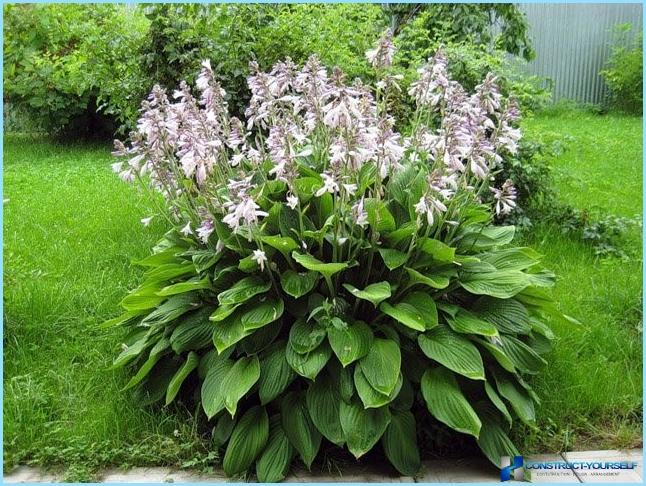
Varieties of hosts so a lot, they differ not only in coloration. The leaves of this plant can be narrow, rounded or heart-shaped. To the touch they are also all different – smooth and rough, matte and crimped, wrinkled and shiny, with a metallic sheen and velvety, wavy and with a waxy coating. Given the variety of colors leaves hosts are distinguished:
- Green;
- Blue;
- Yellow;
- Variegated with light edging;
- With a green border on the edges.
Popular varieties host ↑

Wavy – took their name from their wavy leaves. It grows in the form of a ball of green with a broad white stripe down the middle, leaves. The flowers of this variety appear closer to the end of the summer. So the plant grows on, flowers should be cut after they are gone.
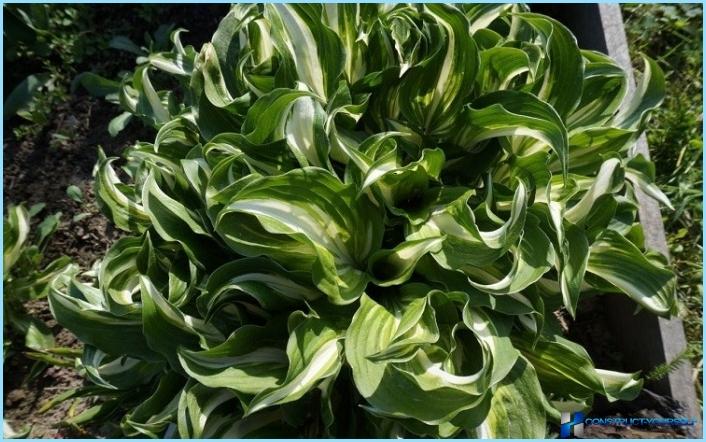
Plantain – has a large, smooth and green heart-shaped leaves. Its small white flowers like little bells. She grows well in the sun and in the shade.
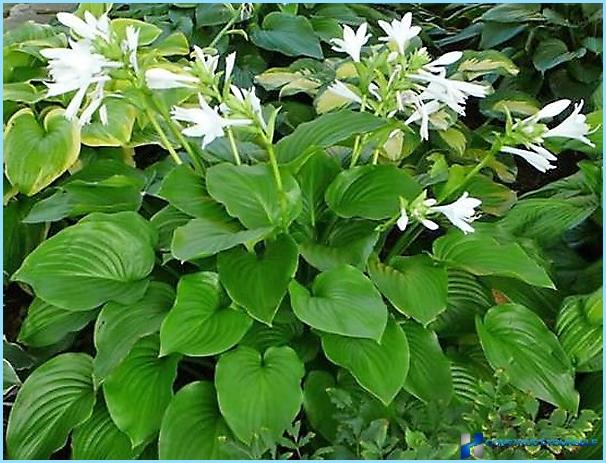
Hybrid hosts very diverse. Their leaves come in a variety of shapes and colors. Hybrid plants are good because they are more stable and will suit any designer’s.
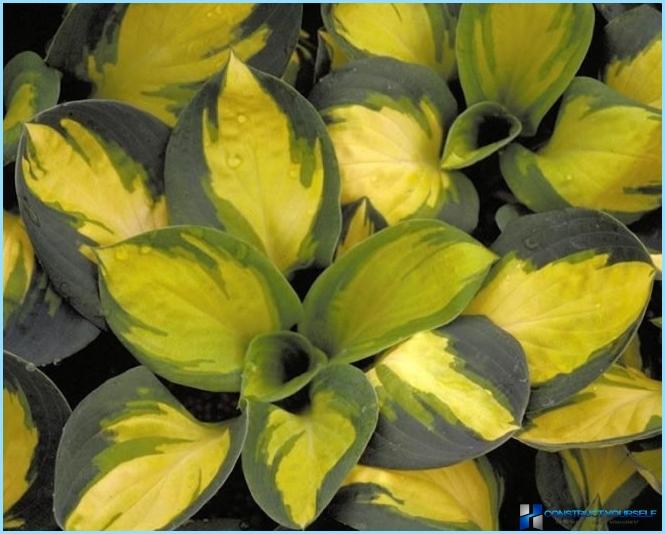
Belokamennaya quite small in size. Has green leaves with a white rim, and why it name. Likes heavy clay soil and it is good to plant near a pond.
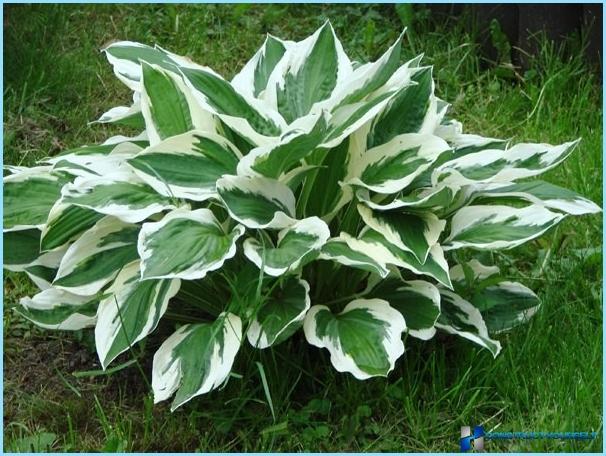
Swollen – usually larger than the average size. Its light-green leaves, pointed at the ends, very large lined stripes, and why the impression that they are swollen. Flowers white or lilac flowers on high stems.
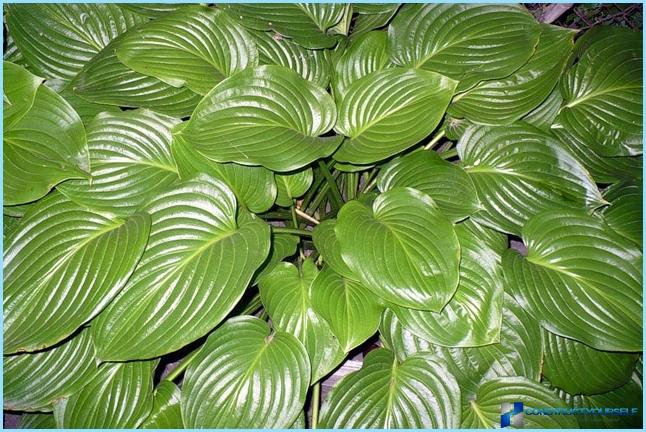
Conclusion ↑
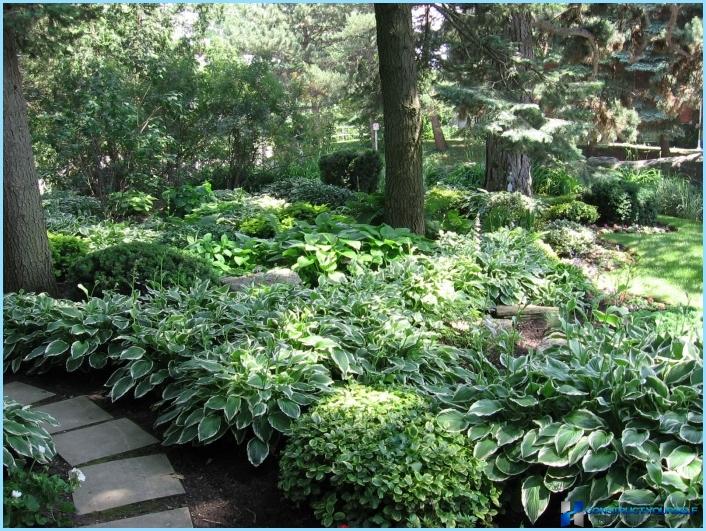
Host in landscape design will make a fabulous decorative accent area. Lush beautiful shape of the Bush combined with expressive, colourful foliage makes an excellent host plant for a single landing, and for the big tracks.

